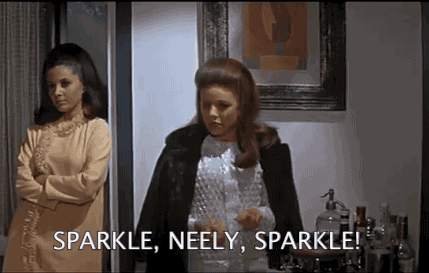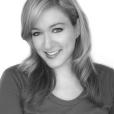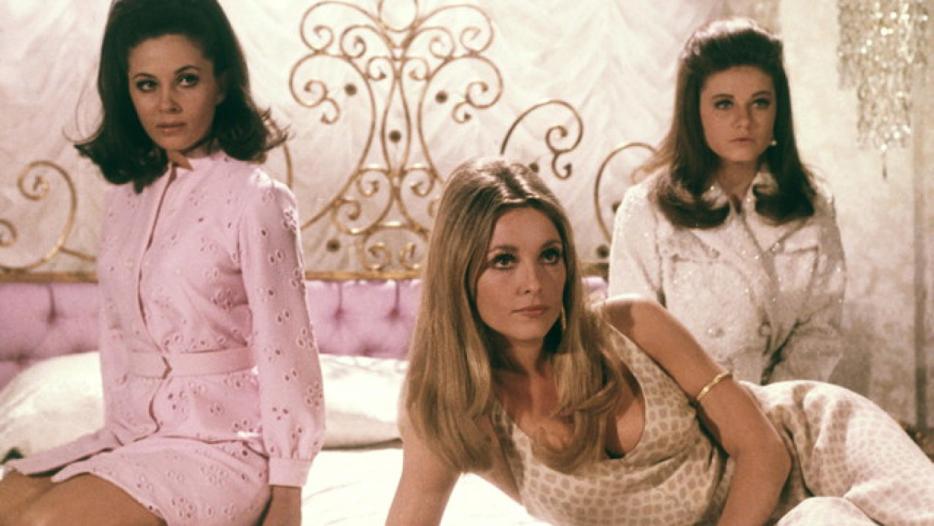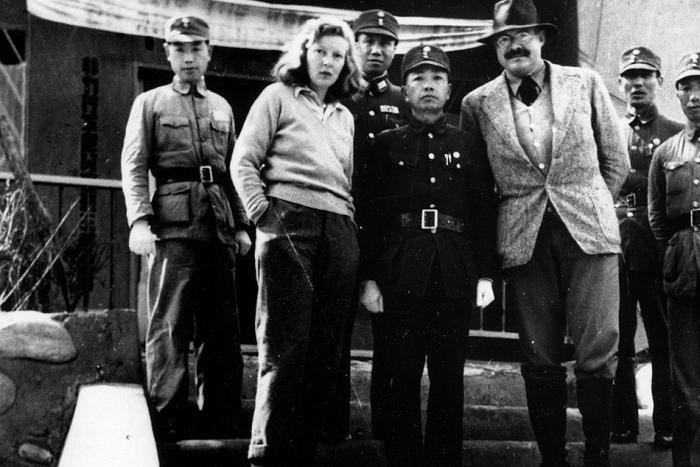In 1966, Jacqueline Susann published Valley of the Dolls, a book that would go on to sell 30 million copies, spawn a cult following, and two films (the sequel infamously penned by Roger Ebert). Born in Philadelphia in 1918, Susann, a remarkable beauty, moved to New York to try to “make it.” She didn’t, at least not in show biz. She modeled, married, acted in bit parts, and had affairs before finally turned to writing, which became her true claim to fame. Her first book, Every Night, Josephine!, was published in 1963. Three years later, pulling from her own life experiences and then adding even more drama, Susann dropped Valley of the Dolls on the world, followed by The Love Machine (1969) and Once is Not Enough (1973). After her death from breast cancer in 1974, two more books were released posthumously: Dolores (1976) and Yargos (1979).
To celebrate the 50 year anniversary of her best-known work, we’ve assembled a roundtable of Doll fans to discuss marriage plots, drugs, trash and how Valley of the Dolls still resonates today.
Kiva Reardon: I’m interested in talking about so much in this book. But maybe the best place to start is when you first read it, since it’s turning 50 this year. I only just read it, after realizing I’d been stuck in a non-fiction bender for all of 2016. I wanted something “easy” to read (let’s totally talk about “trash”) and my friend loaned me a copy. I read it all in 48 hours. When did you first read it? Were you as entranced as I was? Why? Tell me everything.
Amber Katz: I first read it when a college roommate of mine gave it to me, about 15 years ago. We were both planning on moving to New York after graduation and were obsessed with the idea of being as glamorous as the “dolls” in the book. After four years of Camus and Baudelaire (I majored in French lit) I was delighted to indulge in an easy read. I read it in a weekend and promptly devoured the movie, bought it on DVD, then made the entire aesthetic my hair/makeup inspiration for life. The campiness never gets old. By the way, the roommate and I both went on to work in the beauty industry.
Manisha Aggarwal-Schifelitte: When I moved to New York after graduating university to do an internship, this was the first book I got with my new library card! I remember reading it on the subway into Manhattan feeling like a total cliché, but I was totally obsessed with it (that pink cover!). I studied the time period in school, and I was fascinated with the book, both because it was so campy (pretty white girls with boy problems and drug problems and lots of money!), but also because it was a historical artifact for the time. Rereading it for this roundtable, I had forgotten almost everything that happened, but I couldn’t put it down even for a second time!
Sarah Nicole Prickett: The likeliest story is that I read the book because I spent too much money on a perfect first edition to then not read it. Helen Gurley Brown once said she wished she wrote it, so maybe that was the allure? I don’t remember New York City, or my own life, having anything to do with my enjoyment of this masterpiece of obviousness—it’s like, everyone likes to see beautiful (white?) women suffer, or at the very least stop getting away with things. It restores a sense of justice we might not believe in but have nonetheless inherited. Besides, I like pillheads. They’re gamblers, bigtime feminine gamblers. It’s so easy to mix the wrong colours and overdose and die without anyone, including yourself, knowing if you meant to. Happy Monday!
AK: The allure of the city is practically its own character in the novel. The “establishing yourself in New York City/finding your tribe of like-minded friends/dealing with dating utter douchebags” thing is so iconic, we see it happening in more and more iterations. Sex And The City is essentially Valley of the Dolls through a '90s/early aughts lens and Girls is the Millennial version. Of course, there are many fantastic cities, but moving here feels like an important step to take careerwise for a multitude of industries/functions.
KR: Super glad you brought up SATC and Girls, Amber. In so many ways there a strong continuation of exactly what Jacqueline Susann was looking at in 1966. Which in a way seems a bit crazy (non-gendered crazy), since that was such a cusp moment for feminism. And here were are, 50 years on, and a lot of the same issues are cropping up: body image, pressures to balance professional lives and personal lives, and “getting a man.” To me, it’s the latter that really positions the book as a dark satire of patriarchy—literally all the characters are destroyed by trying to marry a man. (The only other book I know that does that so well is Women as Lovers by Elfriede Jelinek, and she won the Nobel Prize.) I guess that while this “women in the city trying to have it all” trope is something we see a lot now, this quality of the book, it’s destructive quality, really makes it stand out.
SNP: The only other book I know that does that so well is…. Sylvia Plath’s life? Maybe the stories of Tama Janowitz, i.e. Slaves of New York, ridiculous title, ridiculous sensibility, very much of the ’80s—that “mixture of luxury and poverty,” as Jeanne Moreau describes the casino in Baie des Anges (I was just rewatching it, hence the quite random reference, although Manhattan is kind of like a casino in a mall or something now). Since I’ve recently stolen a Bookforum login from my editor, thanks Lidija!, allow me to copy and paste from Sheila Heti’s piece on Valley… a few years ago:
Reading the book feels more like hurtling down Niagara Falls—driven by a torrent of sex, drugs, and doom. The panic with which one turns the pages is like the mixture of curiosity and fear that accompanies reading the Oedipus myth. The protagonists can’t do anything to escape their terrible fates, and each choice binds them closer to their destinies, yet there are no other choices. Just as in the myth, where things cannot turn out well for humans, in Valley of the Dolls nothing can turn out well for women past thirty. (EMPHASIS MINE.)
MAS: Hurtling! What a good descriptor. That’s totally how I felt reading, like it starts fairly slow and then all of a sudden it’s like WAIT HOW DID THIS START HAPPENING!
KR: Yes! It’s a trap! And, like the women, once you realize you’re heading down that path you’re too far gone.
AK: I would agree with that. The way it’s presented in the book, it’s almost as if the more and more success these women achieve, the more they sort of “pay” for it in the form of psychological damage/doll dependency and also a supreme lack of luck in love. It’s kind of like course correction in sci-fi. These women all were able to make it in utterly exclusive, hugely glamorous industries in an era way before every influencer on earth fancied herself her own “Gillian Girl” but they all got so caught up in the pressures of it, clearly to their own detriment.
MAS: And the destruction happens in public and in private (or it constantly threatens to appear in either sphere), which makes each woman’s situation seem so dire, like there’s nowhere to run or hide from the inevitable.

SNP: That’s so funny, AK. I’ve always wondered if the real reason Sylvia Plath killed herself was that she, a lifelong fan of beaches and tanning, was living in England, in one of the worst winters ever, without sun. To me a lack of sunshine is more oppressive, but the moral degradation of an endless summer, yes—absolutely. “A sunny place for shady people,” as W. Somerset Maugham (just looked it up) said of the French Riviera. That’s a longstanding view of Southern California held by the English and New Englanders alike, and—according to Mike Davis, the intellectual shock jock of SoCal—it’s why so many major apocalypses on film are set in L.A.
Neely especially has the attitude of one of those ravers at the beginning of… is it Armageddon? Where they’re all on the roof waiting for the aliens with outstretched peace signs. She’s very much of the belief that nothing can kill her—no illness, no pills, not even an overdose, not even a trip to the psych ward—and, in fact, that everything she wants is good for her, necessary even.
AK: I mean it in the more ironic, "Summertime Sadness" sense of the expression. Of course, I'm more upbeat in better weather as well, but I wonder if the pressure to seem happy in Hollywood became a role to play in and of itself, all playing out during the private role of a lifetime Anne (the non-actress of the trio) would like to thank the Academy for, i.e., that she and Lyon had a healthy relationship. That kind of fake-happy horseshit would probably lead to anyone's Rx abuse.
KR: Does Lana Del Rey like this book? Serious question…(I’m now listening to “Summertime Sadness”, FYI.)
AK: I would LOVE to know.
KR: I’m googling so hard right now...seems like no one’s asked her but it’s obviously used as a reference point. I’m going to go out on a limb for Lana and say she’s read it and is a fan. Her fave is def Jennifer.
MAS: Neely calls Anne out on that later in the book, I think. She says that Anne thinks she’s better than everyone because of her upbringing and her even temper, whereas Anne and Jennifer aren’t afraid to say exactly what they think and what they want from life, even if it’s unattractive or selfish or destructive. And then at the end, Anne succumbs to the dolls as well, even if it’s not as dramatic as with the other women.
KR: Ya, at least on the east coast there was a glimmer of hope of being able to return to “home”, Maine, which I (naively) thought Anne would do. But this book is some East of Eden shit: once you leave, you can’t return, and all that’s left is to move forward and west.
Maybe we can round things off by talking about trash. This seems to play out in two ways in this book: one, being that stories about women are considered “lighter” and thus dismissed (SATC vs The Sopranos, for example) but also, ok, this is a “drugstore” book. So is this book trash? Is it terrible to call it that? Or, like, who the fuck cares because trash can be beautiful?
MAS: It does appear in Nicole Cliffe’s Classic Trash series
SNP: Of course it’s trash. It’s about all the naked gross things we most want to discard, or disown entirely, like ambition and jealousy and the institution of heterosexual marriage. I’m kidding. I mean, I’m married. But yes, the book is trash through and through. The obsession with packaging. The throwaway lines that pass for insight. The idea that, per Angelina Jolie’s tattoo, what nourishes us also destroys us. Don DeLillo agrees. In White Noise, I think, and in Underworld, his thesis is that we are what we waste: “What we excrete comes back to consume us.” All the characters eventually eat shit.
The one who eats the least shit is maybe Anne, who is also the best-behaved in a number of conventional, or East Coast conventional ways—which leads me to what I first thought about the book, when I was younger and closer to (though more in denial of) my Christian upbringing. I thought the fates of the characters, which Sheila Heti mentioned in that great bit I pasted above, were less like fates and more like the wages of sin. I still think it’s sort of boring and conservative and black-and-white, underneath that neon sense of shock, in the way a lot of tabloid writing is.
KR: I’m single and hate being single, but this book offers no comfort in the idea (or myth) of marriage either. I’m not against marriage but do think there’s a false promise of perfection and security that’s built into it. It’s not that it’s comforting to read something like Valley of the Dolls (because, obv, I want to end up happily with some nice feminist bro and not popping pills to tolerate a human man I share a house with). But I guess there’s something powerful in reading a book that doesn’t just say, “Don’t worry, it’s all going to work out.” Because that shit gets hollow real fast.
SNP: But it’s just as comforting to watch bad things happen to people we think are bad.
KR: But is Anne “bad” or just boring? I feel like her sin is being boring?
SNP: Mostly boring! Definitely the least bad, which is why she eats the least shit. Jennifer literally dies for the sin of vanity. Neely, who practices most of the sins, including coveting and “stealing” another woman’s husband, turns out to be one of those people for whom death almost seems too good. (Though isn’t Neely everyone’s favourite, because she has the most wits?)
KR: Let’s end off by picking our favourites, which is incredibly bitchy and perfect for this rather bitchy book. Jennifer is my favourite. I’d argue she doesn’t die for the sin of vanity but because she’s trapped by vanity (another patriarchal critique): no one ever sees her for more than her body (particularly her breasts), not even her supposed white knight husband. Anne is too bland and Neely is a fucking bully and I actually hate her.
AK: Jennifer is totally my favorite. She’s so tragic, vulnerable and LOHAN about the whole thing.
MAS: Can I say Helen Lawson? I know she’s not in the core three, but I liked her the best. I felt like Anne, Neely, and Jennifer (especially Anne and Jennifer) blended together, like i couldn’t imagine their faces. Helen I could see, and I wanted so much more of her! I had forgotten that the book wasn’t actually about her.
SNP: Seconding Helen Lawson. She’s like Bette Davis, a bit. Though I do like reading about Neely’s life best. As Davis says in All About Eve: “Heaven help me, I love a psychotic!”









